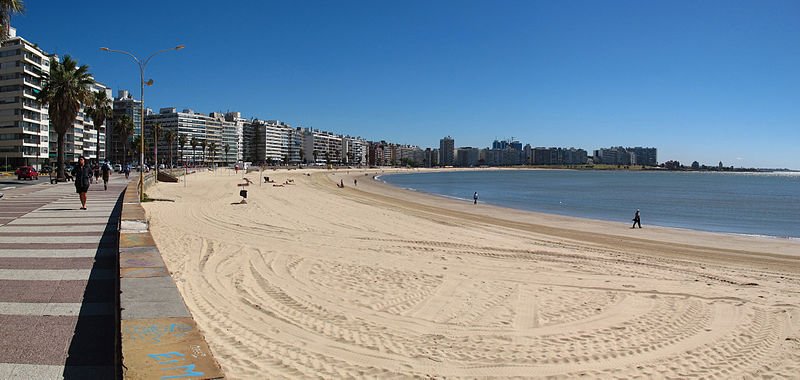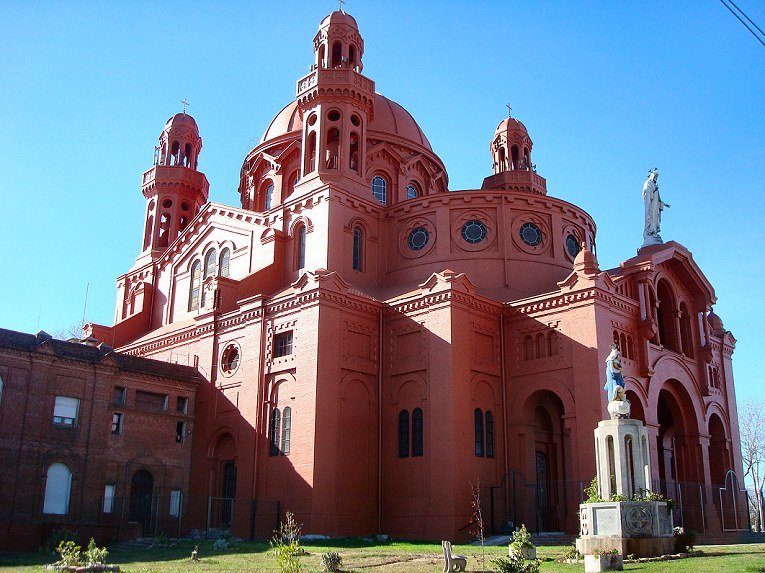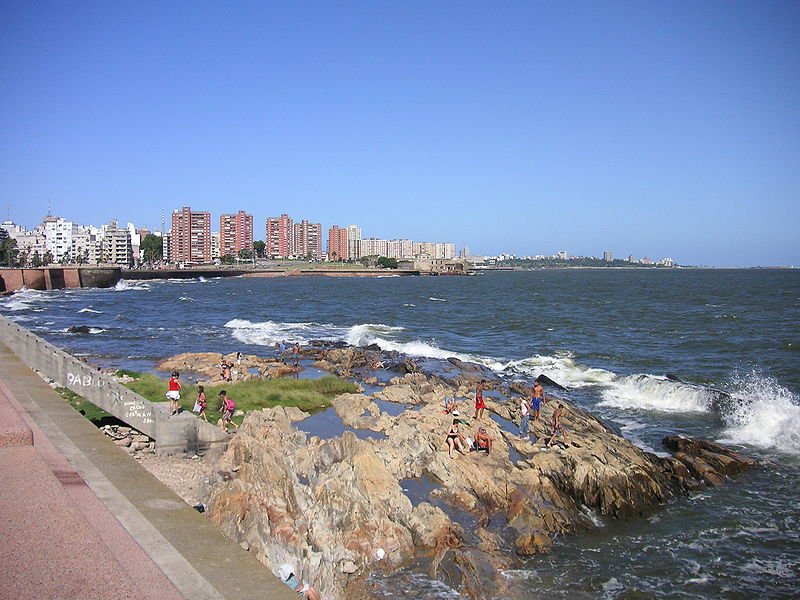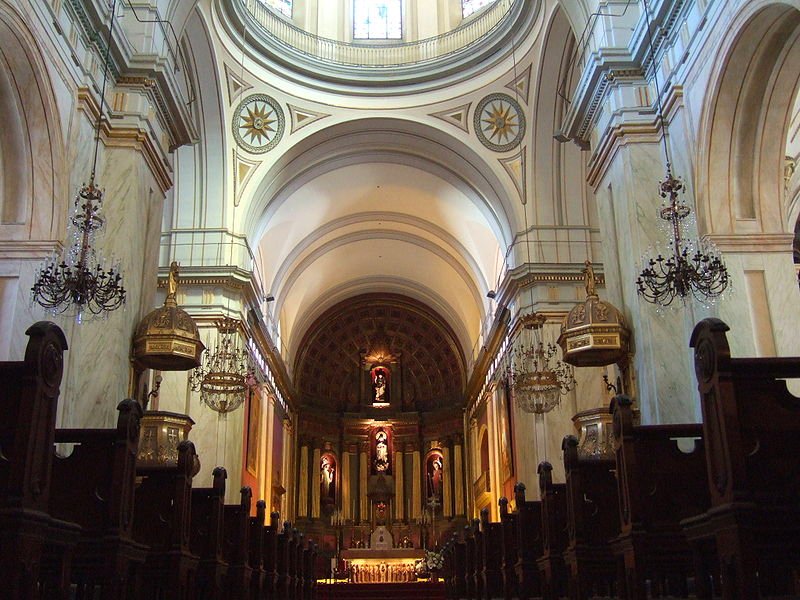 Playa Pocitos Pano, Montevideo, Uruguay
Playa Pocitos Pano, Montevideo, UruguaySource: https://commons.wikimedia.org/wiki/File:04._Playa_Pocitos_Pano.jpg
Author: Elemaki

Uruguay is a relatively small country in southeastern South America. Its name comes from the Guaraní language meaning "river where the painted birds live", and refers to the Uruguay River, of which Uruguay is located on its eastern bank. It is bordered by Brazil to the east and Argentina, across the Uruguay River, to the west.
Covering 176,215 sq km (68,037 sq mi), Uruguay has a population of just 3.4 million (2011 estimate). Its capital and largest city is Montevideo. Uruguay is three hours behind Coordinated Universal Time (UTC-3) and two hours in summer. Traffic is driven on the right here. The phone IDD code is +598.
Uruguay is the most economically developed country in South America, with the highest nominal GDP and the highest ranking in Human Development Index. It is also regarded as one of the least corrupt country in Latin America. In 2010, Uruguay had a nominal GDP of $40.714 billion, equivalent to a per capita GDP of $12,130. Its per capita GDP at purchasing power parity stood at $14,342.
 Santuario Nacional del Cerrito de la Victoria, Uruguay
Santuario Nacional del Cerrito de la Victoria, UruguaySource: https://commons.wikimedia.org/wiki/File:Santuario_Nacional_del_Cerrito.jpg
Author: Hoverfish

 Coast of Montevideo
Coast of MontevideoSource: https://commons.wikimedia.org/wiki/File:Mar_revuelto_en_Montevideo.jpg
Author: Ecemaml, Góngora

The Spanish arrived in present-day Uruguay in 1516, but due to native hostility and absence of precious metal ores such as gold and silver, did not make any colonial inroads until the 17th century. For a while both Spain and Portugal vie for control of Uruguay.
Uruguay declared its independence from Spain in 1825, though the independence was only recognized in 1828. As with the rest of South America, Uruguay had its share of unrest, particularly in the 1950's when demand for Uruguay's agricultural products brought a steep decline in living standard resulting in labor unrest.
 Interior of Montevideo Cathedral
Interior of Montevideo CathedralSource: https://commons.wikimedia.org/wiki/File:MontevideoCathedral1.jpg
Author: John Seb Barber

Uruguay was in a state of emergency from 1968 and lived through the 1970's in a constant state of political turmoil. Democracy only returned to the country after the national elections of 1984.
Planning your visit to Uruguay
Visitors who do not need a visa to enter Uruguay include the nationals of Argentina, Australia, Austria, Bahamas, Barbados, Belgium, Belize, Bolivia, Brazil, Canada, Colombia, Costa Rica, Croatia, Cyprus, Czech Republic, Denmark, Dominican-Republic, Ecuador, El Salvador, Finland, France, Germany, Greece, Guatemala, Guyana, Honduras, Hong Kong, Hungary, Iceland, India, Ireland, Israel, Italy, Jamaica, Japan, Latvia, Liechtenstein, Lithuania, Luxembourg, Malaysia, Malta, Mexico, Monaco, the Netherlands, New Zealand, Nicaragua, Norway, Panama, Paraguay, Peru, Poland, Portugal, Romania, Seychelles, Slovakia, Slovenia, South Africa, South Korea, Spain, Sweden, Switzerland, Trinidad and Tobago, Turkey, United Kingdom, United States and Venezuela.The main airport and gateway to Uruguay is Carrasco General Cesáreo L. Berisso International Airport, located 5 km from downtown Montevideo. Most flights is between destinations in South America, the only exceptions being the American Airlines flight from Miami and the Iberia flight from Madrid.
Major Cities in Uruguay
Places of Interest in Uruguay
- Cabo Polonio
- Fortaleza de Santa Teresa
- Punta del Diablo
 Latest updates on Penang Travel Tips
Latest updates on Penang Travel Tips
 Discover with Timothy YouTube Channel
Discover with Timothy YouTube Channel
 PG Food Channel
PG Food Channel
 Learn Penang Hokkien YouTube Channel
Learn Penang Hokkien YouTube Channel
 SojiMart Videos
SojiMart Videos
Latest from Discover with Timothy: Gurney Bay - what to see and do there
About this website

Hello and thanks for reading this page. My name is Timothy and my hobby is in describing places so that I can share the information with the general public. My website has become the go to site for a lot of people including students, teachers, journalists, etc. whenever they seek information on places, particularly those in Malaysia and Singapore. I have been doing this since 5 January 2003, for over twenty years already. You can read about me at Discover Timothy. By now I have compiled information on thousands of places, mostly in Peninsular Malaysia and Singapore, and I continue to add more almost every day. My goal is to describe every street in every town in Malaysia and Singapore.
Robbie's Roadmap
- Episode 1: Robbie's Journey to Financial Freedom
- Episode 2: Lost in America
- Episode 3: The Value of Money
- Episode 4: The Mentor
- Episode 5: The Thing that Makes Money
- Episode 6: The walk with a Billionaire
- Episode 7: The Financial Freedom Awakening
- Episode 8: Meet Mr Washington
- Episode 9: The Pizzeria Incident
Copyright © 2003-2024 Timothy Tye. All Rights Reserved.


 Go Back
Go Back